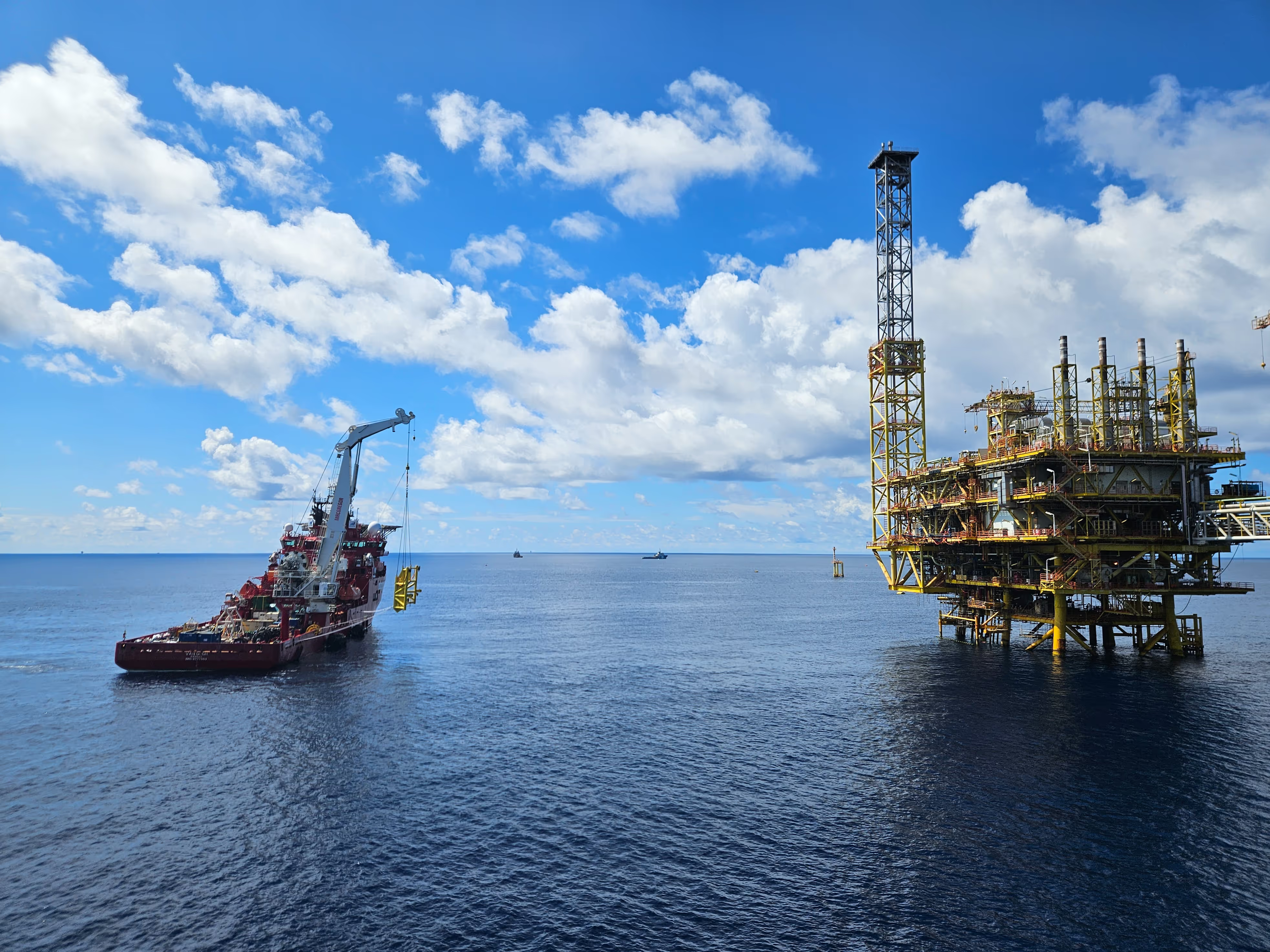GDF Suez E&P Netherlands needed to remove two diesel-driven cranes from their L10-AP platform and replace one of them with a new crane. They contracted Conbit to look for options for this job and provide the best structural design and procedures solution.
Watch how we prepare and execute
Watch how we prepare and execute

The platform and solution
The GDF Suez E&P Netherlands’ gas production platform, designated as L10-AP, is located in the Dutch sector of the North Sea. It is one of the platforms of the L10-A offshore facility.
Conbit’s solution is to use a tower crane to decommission the existing deck cranes and install a new deck crane. With the new deck crane, they could demobilize the tower crane.
Cost advantage
Conbit proposed a solution to erect a temporary tower crane for disassembling the two existing deck cranes and installing the new deck crane. The new deck crane would be used to dismantle the tower crane. Using a temporary crane in this way offers a significant cost advantage over the alternative method of using a crane vessel. This is because such a vessel is much more expensive to rent than a temporary crane.
Tower crane and new crane
The temporary crane used to remove the existing deck cranes was installed on a special base structure mounted to the platform framing. Conbit developed the structural design of this base structure.
The replacement crane (KENZ) had a different size and height than the original crane. To accommodate these differences, the Conbit team revised the crane boom rest and maintenance platform. They performed the structural analysis of the crane boom rest and its maintenance platform, including detailed calculations.
PRoject case study pdf
Download the PDF of this project case study here.
Thanks for leaving your email address. You can now download the requested case study
Oops! Something went wrong while submitting the form.
No items found.
Related Cases
Related Services
Maritime
Oil & Gas
Petrochemical
Wind
Lifeboat Davit Installation Services
Onshore & Offshore
Oil & Gas
Petrochemical
Wind
Maritime
Living Quarter Installation Services
Onshore & Offshore
Oil & Gas
Petrochemical
Wind
Maritime
Caisson Replacement Services
Onshore & Offshore
Maritime
Oil & Gas
Petrochemical
Crane Replacement Services
Onshore & Offshore
Oil & Gas
Petrochemical
Flare Tip Replacement Services
Onshore & Offshore
Maritime
Wind
Oil & Gas
Inspections
Onshore & Offshore
Oil & Gas
Petrochemical
Wind
Modification
Onshore & Offshore
Oil & Gas
Petrochemical
Wind
Maintenance
Onshore & Offshore
Oil & Gas
Wind
Petrochemical
Maritime
Installation
Onshore & Offshore
Oil & Gas
Petrochemical
Decommissioning
Onshore & Offshore
Contact
We're here to answer your questions
Do you have any technical questions, general enquiries or do you need additional information? Don’t hesitate to contact our experts. With their expertise and experience in lifting services, they will gladly help you.
You can contact us by phone or email. We’re looking forward to your questions!
You can contact us by phone or email. We’re looking forward to your questions!
%20copy.avif)


















.png)
-1.avif)


